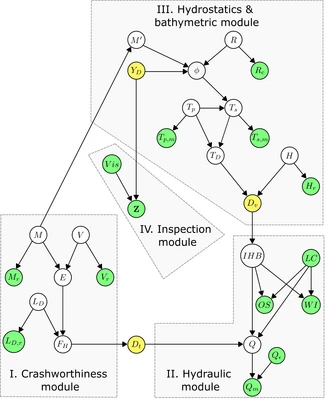A probabilistic digital twin framework for near-real-time risk-informed decision-making of ships under extreme events
Managing risk and uncertainty caused by natural events and accidents is one of the key roles of engineers in order to build a safe and sustainable society. This is especially true for ship structures; extreme wave events are becoming more frequent and intense as a result of climate change, while ever-increasing vessel sizes pose new challenges and risks, as demonstrated by the Evergreen ship grounding at the Suez Canal in March 2021. The exposure of ships to such threats may lead to a catastrophic hull structural failure, which is associated with a set of adverse consequences, e.g., loss of lives, environmental damage and direct costs.
In this project, we develop a near-real-time risk-informed tool for supporting the decision-making process in emergency response situations and for optimizing ship routing during extreme wave and accidental events. Specifically, the main objectives are to:
• Establish a probabilistic digital twin model enabling rapid longitudinal ultimate strength evaluation and reliability updating of intact and damaged ship hulls; Machine Learning techniques are employed for making fast model evaluations.
• Provide reliability-based decision-making in emergency operations; for example, make a decision on whether the damaged ship, after experiencing grounding, should make its journey to the closest repair yard or not.
• Introduce a near-real-time decision support tool for risk-constrained optimization of ship routing under extreme wave or accidental events.
The overall goal of this project is to enhance ship safety and sustainability in the maritime sector. The results will contribute to improving the resilience of ship operations in challenging environments and emergency situations.
Researchers
Funding
Alexander von Humboldt Foundation.
Publications
Georgiadis, D.G., Samuelides, M.S., Straub, D. (2025) “Near-real-time ship grounding damage assessment using Bayesian networks”, Ocean Engineering, Vol. 339, p. 122132. https://doi.org/10.1016/j.oceaneng.2025.122132
